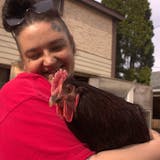Hillary Clinton narrowly won Minnesota Tuesday, despite losing 19 of the state's counties that President Obama carried in the last election.
State officials didn't call the nail biter for Clinton until just before dawn Wednesday.
Clinton held Democratic strongholds in the Twin Cities and northeastern Minnesota to capture 46.41 percent of the vote, but Donald Trump had strong support in outstate Minnesota and the outer fringe of the metro, pulling in 44.96 percent of voters.
About 9 percent of voters — the largest since 1992 — voted for someone other than Trump or Clinton.
The state has backed the Democrat for president going back to 1976, but Trump made a late play for support here, stopping Sunday at the Sun Country hangar at the airport for his first public rally in Minnesota.
Clinton won just nine counties, with wide margins in staunchly Democratic Hennepin, Ramsey, Cook and St. Louis counties. She narrowly won in Olmsted, Carlton, Washington, Lake and Dakota counties.
In many of the typically Democratic counties that Clinton either narrowly won or lost to Trump, the percentage of voters choosing other candidates was higher than the margin of victory. For example, in Winona County, Trump won by 3 percentage points, while 10 percent of voters selected someone other than Clinton or Trump.
Trump's 45 percent is similar to how other Republican candidates have done in Minnesota in previous elections, but just shy of the 47 percent President Bush had in his 2004 re-election.

